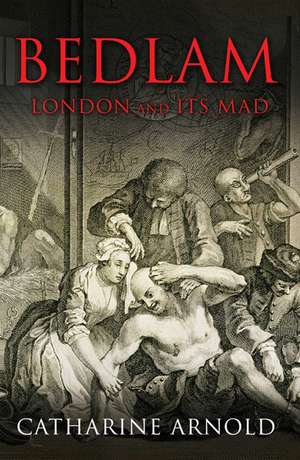Bedlam: London and its Mad
Autor Catharine Arnolden Limba Engleză Paperback – 5 aug 2009
That this is still the most powerful image of Bedlam, over two centuries later, says much about our attitude to mental illness, although the Bedlam of the popular imagination is long gone. The hospital was relocated to the suburbs of Kent in 1930, and Sydney Smirke's impressive Victorian building in Southwark took on a new role as the Imperial War Museum.
Following the historical narrative structure of her acclaimed Necropolis, BEDLAM examines the capital's treatment of the insane over the centuries, from the founding of Bethlehem Hospital in 1247 through the heyday of the great Victorian asylums to the more enlightened attitudes that prevail today.
Preț: 69.57 lei
Nou
13.31€ • 13.93$ • 11.06£
Carte disponibilă
Livrare economică 12-26 martie
Livrare express 26 februarie-04 martie pentru 18.97 lei
Specificații
ISBN-10: 1847390005
Pagini: 320
Ilustrații: 8pp b-w
Dimensiuni: 129 x 198 x 1 mm
Greutate: 0.22 kg
Editura: Simon&Schuster
Colecția Simon & Schuster UK
Locul publicării:United Kingdom
Descriere
'Bedlam!' The very name conjures up graphic images of naked patients chained among filthy straw, or parading untended wards deluded that they are Napoleon or Jesus Christ. We owe this image of madness to William Hogarth, who, in plate eight of his 1735 Rake's Progress series, depicts the anti-hero in Bedlam, the latest addition to a freak show providing entertainment for Londoners between trips to the Tower Zoo, puppet shows and public executions.
That this is still the most powerful image of Bedlam, over two centuries later, says much about our attitude to mental illness, although the Bedlam of the popular imagination is long gone. The hospital was relocated to the suburbs of Kent in 1930, and Sydney Smirke's impressive Victorian building in Southwark took on a new role as the Imperial War Museum.
Following the historical narrative structure of her acclaimed Necropolis, BEDLAM examines the capital's treatment of the insane over the centuries, from the founding of Bethlehem Hospital in 1247 through the heyday of the great Victorian asylums to the more enlightened attitudes that prevail today.







